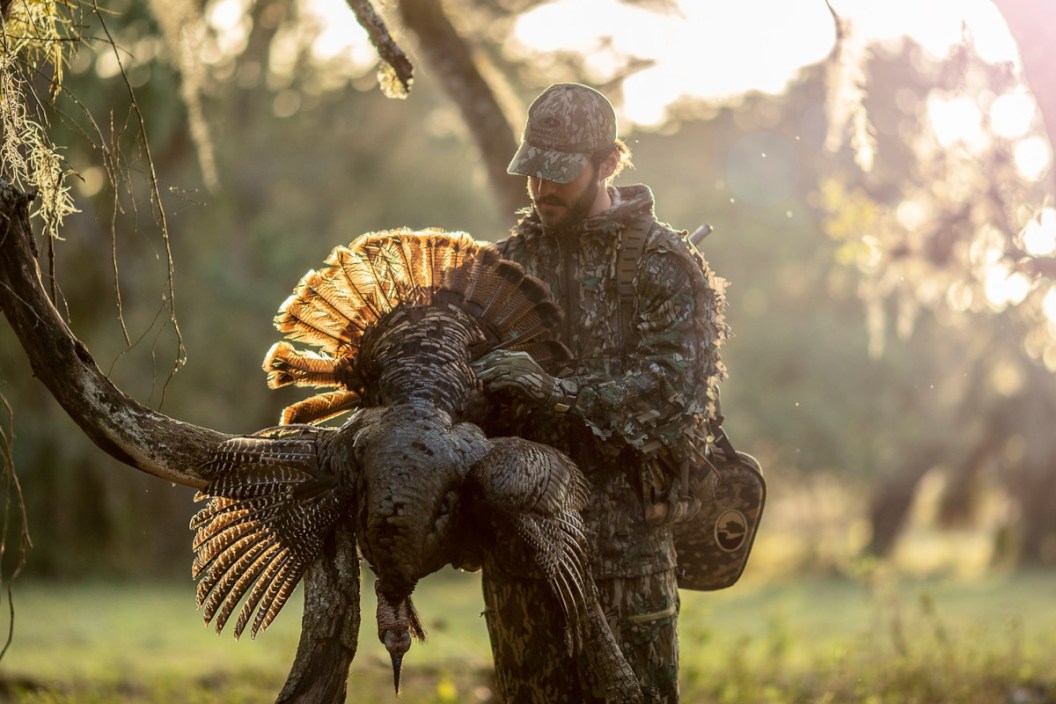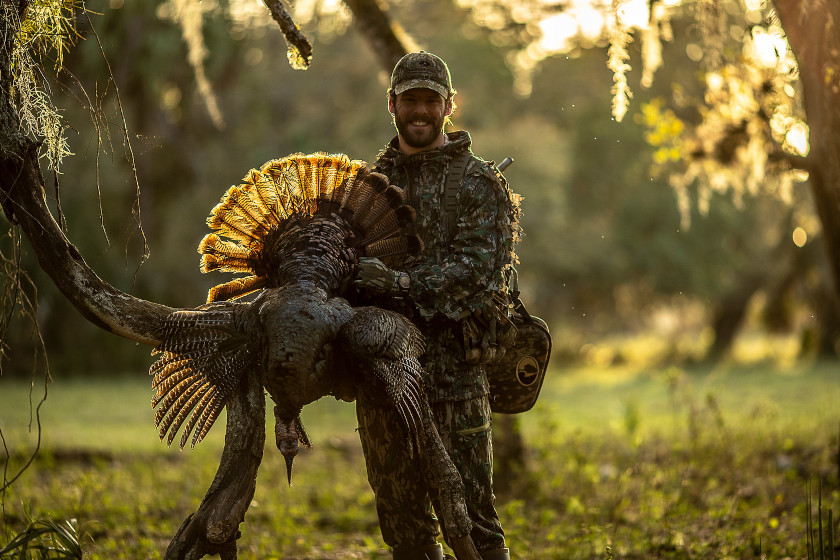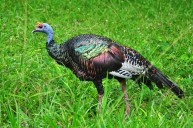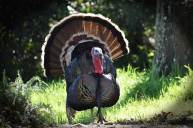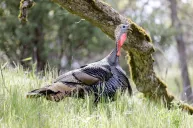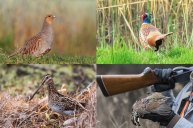Spring is a crazy time across the country for America's turkey hunters. Many would describe turkey season as a short but incredibly intense time. And with that short, intense season comes many traveling hunters looking for wild turkeys. The average person would just group all of America's turkeys together as one indistinguishable group, but the avid turkey hunter knows this is not an accurate view at all. North America is home to five different turkey subspecies, and while they are all similar, behavior, habitat, and hunting tactics all differ. In some cases, it takes a trained eye to spot the incredibly subtle differences between them. And even then, it's not always easy to tell some apart from the others unless you already know what you're looking at. The North American turkey subspecies are as follows: Eastern, Rio Grande, Merriam's, Osceola, and Gould's. If you are looking to hunt turkeys this Spring, read further for information on each species and how harvesting them might lead to a very impressive turkey hunting accomplishment.
Eastern Turkey
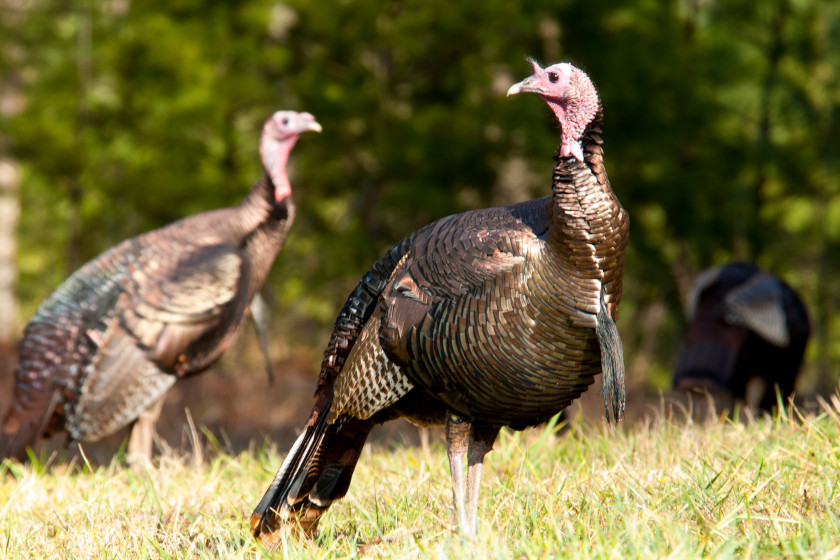
Getty Images: Betty4240
Overview: Of the five subspecies, the eastern turkey is the most widely known and the most hunted. Easterns have by far the biggest range of all American wild turkeys. Their range spans from the edges of Nebraska and Kansas, all the way to the east coast. And while the overall population of Easterns is declining for mostly unknown reasons, most states still boast decent populations with robust hunting seasons.
The Eastern turkey, like the other subspecies, has physical characteristics that set it apart from the others. Most of the time you know exactly which bird you are hunting, just because many states only have Easterns. Things get tricky in places like eastern Nebraska where multiple subspecies exist. In places like that, you will need to look at the bird's physical characteristics.
The Eastern is characterized by its large body size and loud, thunderous gobbles. They are very strong in the beard and spurs department with many birds reaching greater than 10-inch beards and greater than 1 ¼ inch spurs. The Toms are very black with green and purple iridescent feathers. The hens usually maintain a more brown and tan appearance. A Tom's tail feathers are one of the quickest ways to identify the subspecies. Eastern Toms' fans are lined with bronze to brown tips and the overall fan is darker than most other subspecies.
Expectations and Tactics: Because Easterns exist in the part of the country with the highest hunter densities, they are susceptible to a high volume of hunting pressure. Pressure is especially relevant in the southern states where seasons come in early and in midwestern states where the bird density is high. Easterns can be very finicky and tough to hunt. It's best to scout well and hunt early in the season. Because it doesn't take them long to become call shy and can even decoy shy in exceptionally high pressure areas. When hunting Easterns, keep the calling to a minimum, move in close, stay hidden, and be patient.
Rio Grande Turkey
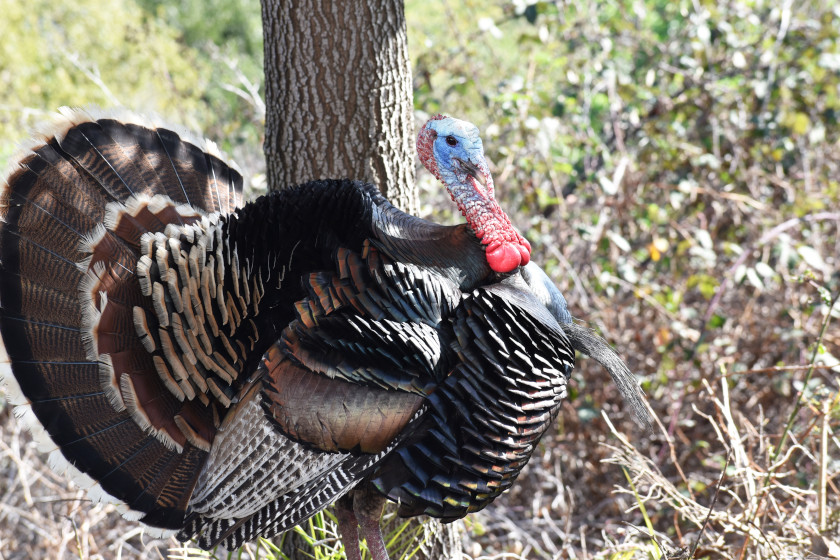
Getty Images: Darren415
Overview: Rio Grande turkeys have carved out their own niche with hunters and are a very popular subspecies to hunt. The Rio Grande's range is a little more broken up than that of an Eastern. A large portion, roughly 75%, of their range can be found in Texas, Oklahoma, Kansas, and Southern Nebraska. There are several isolated populations in northern California, Oregon, Utah, Colorado, Nevada, and Eastern New Mexico. Most of the states listed also have other turkey subspecies available and hybridization does occur.
Rio Grandes have physical characteristics that help set them apart and knowing them is helpful for identification in areas where hybridization occurs. Rio Grandes are slightly smaller in terms of weight and stature and have a weaker gobble than an Eastern. The gobble for someone that has never hunted them is often compared to that of an Eastern Jake. Beards and spurs are also less impressive than Easterns. Rio Grandes are mostly noted for having cream to blonde color tail fans and lighter wing feathers.
Expectations and Tactics: Rio Grande turkeys are also subject to increased hunting pressure in the main part of their range. Areas where they are isolated can be dynamite locations for unpressured birds. Rio Grandes are known for running in big flocks and it is common to call in multiple Toms to one setup. They are incredibly callable and respond to decoys well. When hunting Rio Grandes, don't be afraid to run the call and play with decoy spreads. Also, don't pack it in for an early breakfast like you might with a different species. Keep running and gunning during the middle of the day to find big flocks of birds.
Merriam's Turkey
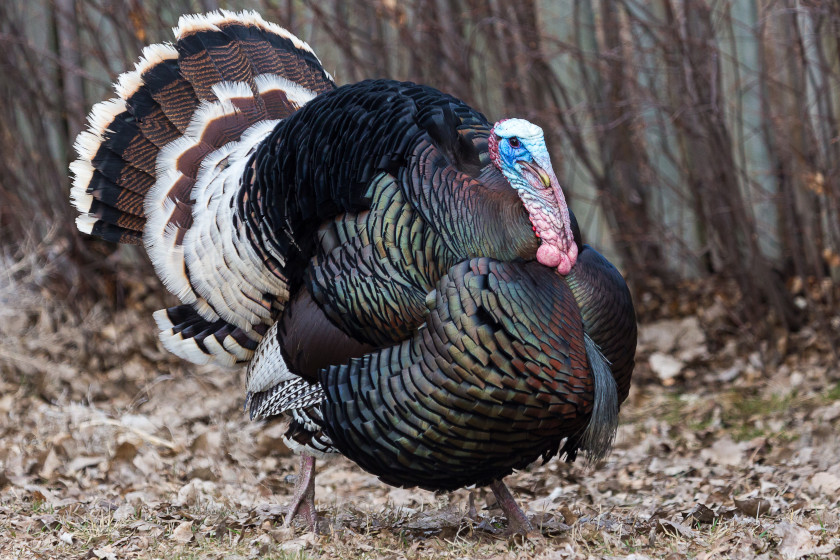
Getty Images: westernphotographs
Overview: Merriam's are the turkey of the west, dotting its mountainous landscape. The Merriam's turkey's range is more broken up than that of the other subspecies. There are several healthy populations of birds in different regions of the Rocky Mountains and in various ridge formations east of the Rockies. States with good, huntable populations of Merriam's turkeys include: Arizona, New Mexico, Colorado, Wyoming, Montana, South Dakota, and Nebraska. California, Idaho, and Washington have small populations as well. While some of the other turkey subspecies populations seem to be in gradual decline, Merriam's seem to be doing very well and offer amazing hunting opportunities.
Merriam's are regarded by many turkey hunters as the most beautiful of the subspecies. The bird itself has a large body like an Eastern, and his tail fan and wings are very buff colored, often even white. The pure beauty of a Merriam's turkey makes up for the fact they are completely lacking in the beard and spurs department. On average they have the shortest beards and spurs of the whole field of subspecies. Also, even though the bird is large, don't expect big thunderous gobbles.
Expectations and Tactics: While many people like to travel west to hunt these birds, it is often not too hard to find pockets of birds that are greatly unpressured by hunters. Some sleeper states like Arizona and New Mexico have great populations of birds and very few hunters, making for an amazing turkey hunting experience. While the calls aren't loud, Merriam's are very vocal, often gobbling most of the day and they respond great to calls. Decoys work well too. Use the rolling, mountainous terrain to get in their bubble and let them have it with the calls.
Osceola Turkey
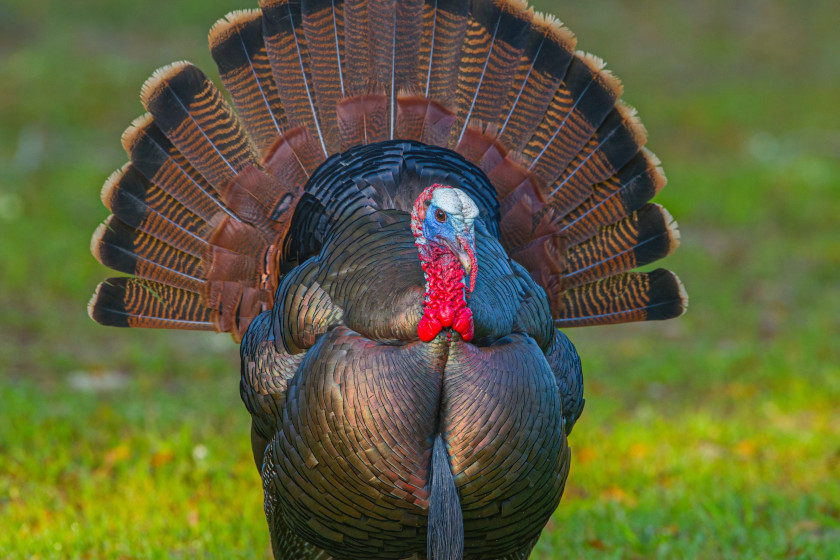
Getty Images: Dan Rieck
Overview: The Osceola turkey, also known as the Florida wild turkey, has the smallest range of any of the subspecies. And because of those names, it's pretty easy to guess in which state it resides. Osceolas reside in the southern half of Florida and nowhere else. If you are looking for a true Osceola, I would encourage you to hunt no further north than Orlando due to the frequent hybridization with Easterns that occurs around the distribution line.
Osceolas are known to have mediocre beards but very long spurs, probably due to the soft ground terrain they live in. An Osceola turkey is a large bird with a powerful gobble, much stronger that of western birds. They also contrast western birds in terms of their color. Osceolas have dark brown to black tail fans and wing tips. They are more devoid of color than any of the other subspecies.
Expectations and Tactics: When it comes to pressure, public land Osceolas might be the most pressured and challenging of all the subspecies to pursue. This is due to their small range and hunters seeking them out to complete their Grand Slams. Therefore, the birds are very call and decoy shy. Use the flat terrain and heavy undergrowth of their home swamps to move in close. Try to keep your movements and calling minimal and appropriate and maybe you'll have a chance at an Osceola of your own.
Gould's Turkey
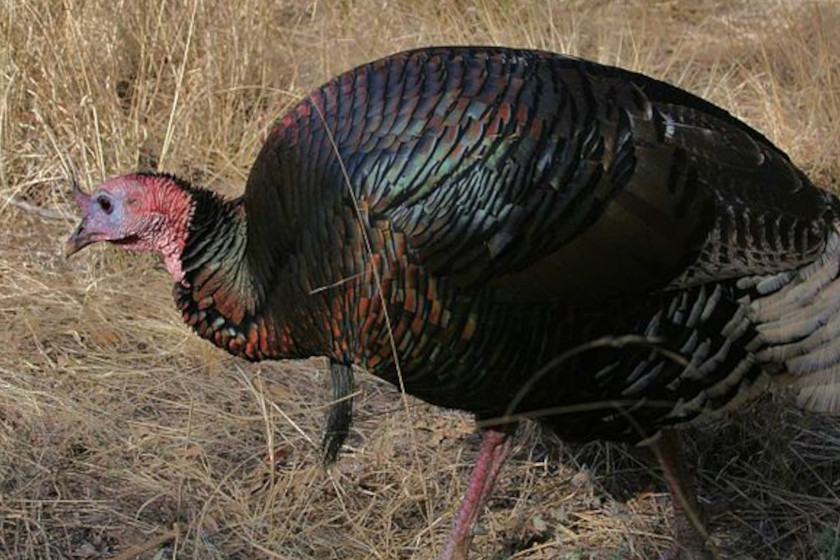
Wikimedia Commons: Tuvas (talk)
Overview: Rounding out the five main turkey subspecies is the Gould's turkey. The Gould's turkey is a medium to large sized bird with solid white tail fans and wing tips. They are a beautiful bird, even though they carry average sized beards and spurs. They are also very active and very vocal. A very large portion of their range is south of the border in the mountains of Mexico, but there are a couple very small populations in the southern tips of Arizona and New Mexico.
Expectations and Tactics: It is possible to chase Gould's turkeys in Arizona and New Mexico but success rates are very low due to small range, low numbers, and pressure. Your best bet to tagging a Gould's turkey is to plan a trip to Mexico. In most cases, the DIY-style approach is going to be tough unless you're local. There are several outfitters and guide services that will help you with the whole process and put you on a bird. A guided turkey trip to Mexico could give you the most unique and fun turkey hunting experience of your life.
Turkey Slams
The great thing about turkey slams is that while these challenges are tough, they're usually much easier to attain than a wild sheep or other big game slam. In case you were wondering, I have excluded the Ocellated turkey of central Mexico and South America on purpose from this list because the five subspecies I've discussed can be pursued by every hunter inside the borders of the United States. Hunting opportunities for the Ocellated are isolated almost exclusively to the Yucatan Peninsula region of Mexico, which makes for a thrilling, but expensive hunt.
The National Wild Turkey Federation recognizes six turkey slams with three being achievable purely in the United States. The most famous and most easily achievable for most hunters is the Grand Slam. The Grand Slam consists of one of the four main turkey subspecies in the United States: Eastern, Osceola, Rio Grande, and Merriam's.
There is also a Royal slam. The royal slam is basically a Grand Slam plus one Gould's turkey making it five subspecies harvested. Perhaps the most impressive and by far the hardest to pull off is the U.S. Super Slam. This consists of harvesting one bird in each state regardless of subspecies. As you could imagine this will take some time.
Take a look at Realtree's Grand Slam Gobbler ID Guide for quick reference and do some research to get yourself out there this spring. Try something new and chase something different.
READ MORE: WILD TURKEY CONSERVATION: HOW GOBBLERS MADE THEIR HISTORIC COMEBACK
